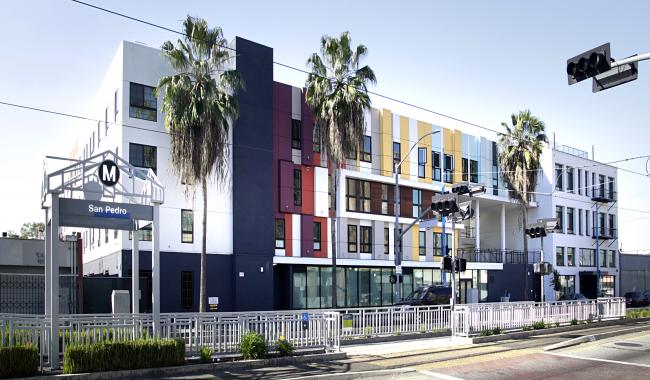Context and Background
California has been facing a housing shortage amidst economic progress, and housing unaffordability has been surmounting, particularly for lower-income people, forcing them to move farther from cities into places with fewer transportation options. To combat this issue, the AHSC was designed to preserve and create affordable housing in areas with good access to jobs, educational facilities and every day amenities.
In 2006, California passed AB32, the California Global Warming Solutions Act, which required green house gas (GHGs) to be reduced to 1990 level by 2020 and a further reduction to 80 percent of 1990 levels by 2050. As a result, the Greenhouse Gas Reduction Fund (GGRF) was created in 2012, which allocates funds from the GGRF to new programs that advance the GHG reduction goals. AHSC is one of the programs funded by GGRF, with a goal to provide economic, environmental and public health benefits, particularly for the State’s disadvantaged communities.
Design and Program
AHSC recognizes the importance of housing, transportation and land use coordination to holistically approach the GHG reduction goals, and maintains a partnership of affordable housing developers, transit agencies, local governments and local community groups.

The program funds three types of developments that are demonstrative of the different needs and geographies within the state: transit-oriented development project area, integrated connectivity project area and rural innovation project area. Each project area type has a minimum requirement for available transit (quality and stops), and 50 percent of the funds are reserved for Disadvantaged Communities, as defined for the CalEnviroScreen 3.0, California Environmental Protection Agency's tool which identifies census tracts with high pollution and vulnerable populations.
GHG reductions are achieved through fewer vehicle miles travelled by residents, through incentives for mode-shift to sustainable transportation modes or shorter trips to everyday amenities. The program also provides funding for improved pedestrian amenities, streetscape improvements and installation of bike infrastructure. Along with reduced GHG, the developments also provide affordable housing and serve as an economic tool for low-income people.
Financing
The AHSC Program is funded by the Greenhouse Gas Reduction Fund (GGRF), an account established to receive Cap-and-Trade auction proceeds. As of 2019, $550 million have been awarded to 101 developments that integrate housing and transportation needs.
Outcomes/Impact
Anti-displacement
- 8,933 new affordable homes created
Household expense reduction
- $730 per month for low-income households, on average
- $550 million in travel costs by switching from driving a car to riding mass transit, biking, or walking
GHG reduction
- 7,800 transit passes distributed to residents
- 222 new buses, vans and shuttles funded
- 158 miles of new and improved bike lanes
- 15,600 cars removed from the roads each year
- 181 million fewer miles driven per year
Economic Development
- 21,000 jobs supported during construction
- 6,000 jobs supported annually after construction




